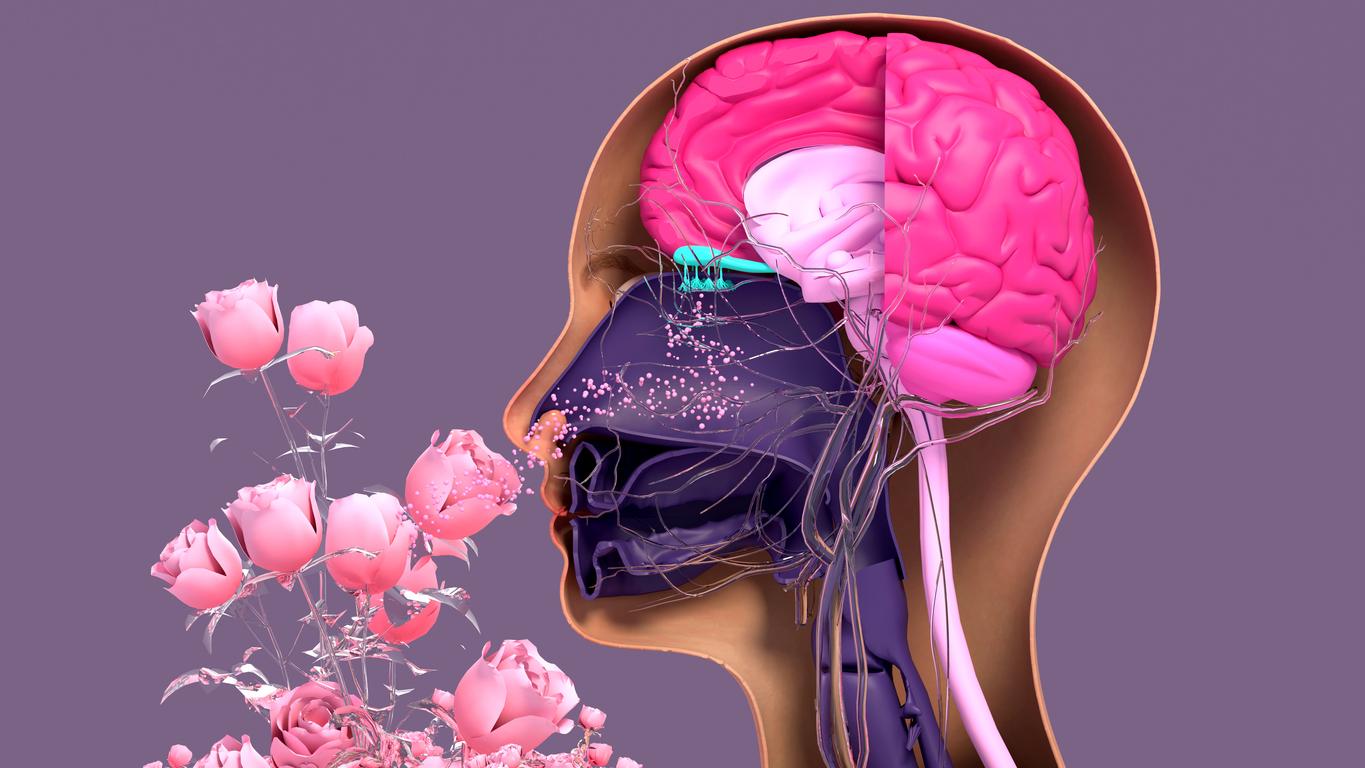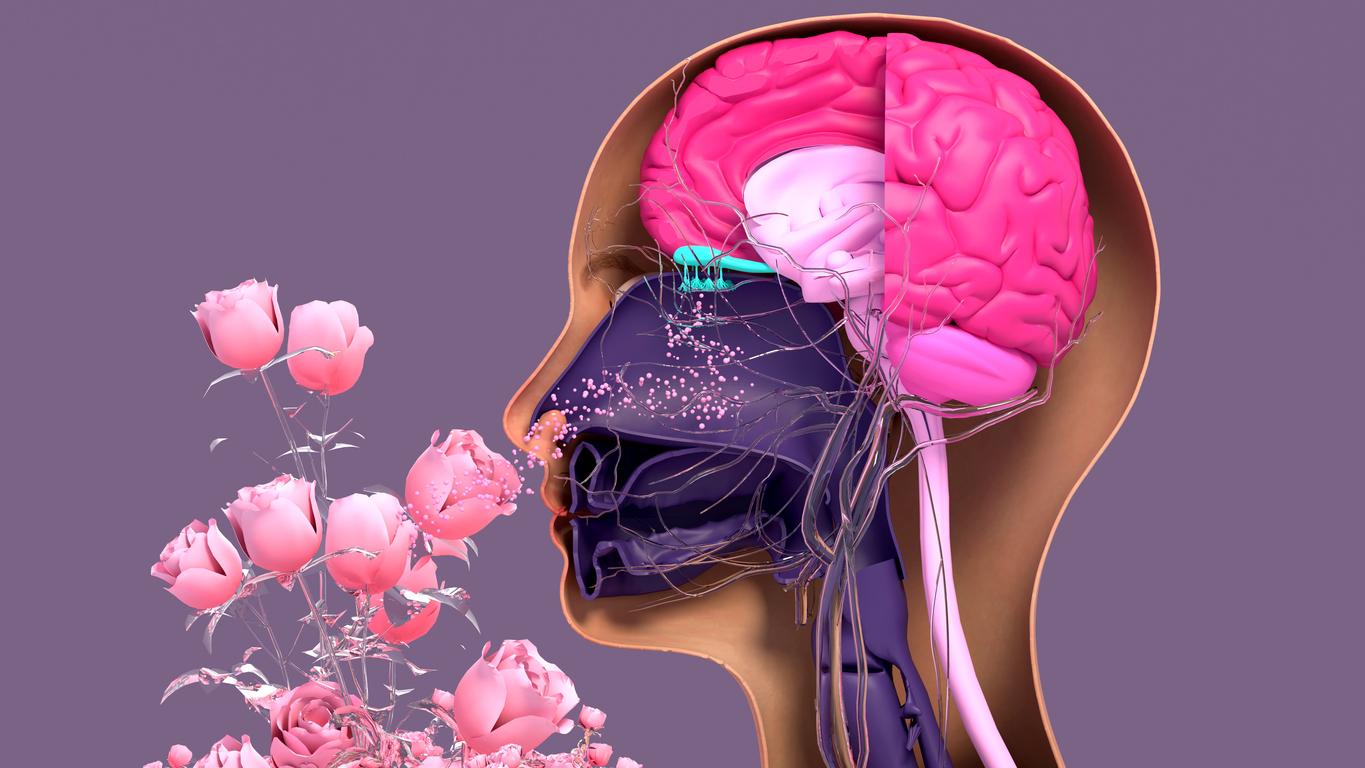The odors perceived by the left nostril are different from those smelled by the right orifice.

- Odors perceived by the right nostril are encoded more quickly in the piriform cortex.
- Olfactory representations were obtained faster when the odors were diffused simultaneously in both nostrils.
- The two orifices are thus in synergy to a certain extent, even if one is slower than the other in encoding an odor.
“The olfactory system of humans has two distinct channels of sensory input, originating from epithelia housed in the left and right nostrils,” indicated researchers from the University of Pennsylvania (United States). In a recent study, they looked at the neural processes underlying odor processing and how the brain, particularly the piriform cortex which spans both hemispheres, processes olfactory information coming from different nostrils.
Measuring activity in the piriform cortex when odors are released into one or both nostrils
To carry out the research, they recruited 10 people. Participants were fitted with intracranial electrodes while they were asked to identify an odor and indicate which nostril it came from. “Participants were awake during the intervention, during which the scientists diffused odors (coffee, banana, etc.) into one or both nostrils using tiny tubes that penetrated about a centimeter into each nostril “, detailed the review Nature in a press release. The identification of the odor could be decoded from the oscillations in the brain region of the piriform cortex thanks to the neuronal activity recorded by the intracranial electroencephalogram.
The brain processes odors in stereo
According to the results, published in the journal Current Biology, the identification of odors in the ipsilateral nostril, i.e. the right nostril which transmits signals to the right cerebral hemisphere, is coded more quickly than that in the contralateral nostril, i.e. the left nostril. In detail, stimulating one or the other nostril with the same odor gave rise to similar but distinct representations during their encoding. This suggests that while each nostril can identify a distinct odor as the same, there are subtle differences in how they perceive the odor. Clearly, each nostril has its own sense of smell.
The authors believe that understanding these processes is essential to better understand how humans perceive and identify odors. It may have broader implications for sensory neuroscience and cognitive science.
















